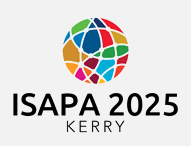Start Date
19-6-2025 12:00 PM
End Date
19-6-2025 1:00 PM
Abstract
Introduction The increasing population of children with Autism Spectrum Disorder (ASD) poses challenges for families and society. These children often experience delays in motor skills. This study investigates the correlation between their actual motor competence and parents' perceptions of their children’s motor abilities, which play a crucial role in shaping skill development.
Methodology 29 Chinese children with ASD were recruited in this study. The parental proxy of Perceived Movement Skill Competence (PMSC) and the Test of Gross Motor Development-Third Edition (TGMD-3) were used to collect data on parents' perceptions of their children’s motor abilities and their actual motor competence. Correlation analysis was performed using SPSS software.
Results The overall actual motor competence of children with ASD show a strong correlation with parents' perceptions of motor abilities (P=0.002, r=0.55), suggesting that parents' perceptions of their children's motor competence in China are generally accurate. Particularly, significant corelations were found in the areas of skipping (P=0.026, r=0.41), sliding (P=0.006, r=0.49), overhand throwing (P=0.00, r=0.60), one-hand forehand strike of self- bounced ball (P=0.046, r=0.37), and kicking (P=0.024, r=0.42).
Conclusions The finding of this study indicated parental perceptions could serve as a valuable proxy for actual motor abilities, this is particularly important for children with ASD, as some may be unable to fully engage with standard motor assessments. Future interventions can involve parents in assessing their children's motor skills, allowing for the development of appropriate activities. Additionally, professionals can use parental feedback to design targeted interventions that are tailored to each child's individual motor abilities.
References Maher, S. J., Schott, N., Lander, N. J., Hinkley, T., & Barnett, L. M. (2018). A comparison of parent report and actual motor competence in young children. Australian occupational therapy journal, 65(5), 387–394.
Kleckner, I. R., Wormwood, J. B., Simmons, W. K., Barrett, L. F., & Quigley, K. S.. (2015). Methodological recommendations for a heartbeat detection‐based measure of interoceptive sensitivity. Psychophysiology, 52(11), 1432–1440
Recommended Citation
Zong, Chenjun; Lu, Yuemei; Li, Zhihui; Zhang, Zichao; and Wang, Xiaozan, "A Study on the Correlation Between Actual motor competence and Parental Perceived Motor Abilities in Children with Autism Spectrum Disorder" (2025). International Symposium of Adapted Physical Activity and International Symposium on Physical Activity and Visual Impairment and Deafblindness. 38.
https://sword.cit.ie/isapa/2025/day4/38
A Study on the Correlation Between Actual motor competence and Parental Perceived Motor Abilities in Children with Autism Spectrum Disorder
Introduction The increasing population of children with Autism Spectrum Disorder (ASD) poses challenges for families and society. These children often experience delays in motor skills. This study investigates the correlation between their actual motor competence and parents' perceptions of their children’s motor abilities, which play a crucial role in shaping skill development.
Methodology 29 Chinese children with ASD were recruited in this study. The parental proxy of Perceived Movement Skill Competence (PMSC) and the Test of Gross Motor Development-Third Edition (TGMD-3) were used to collect data on parents' perceptions of their children’s motor abilities and their actual motor competence. Correlation analysis was performed using SPSS software.
Results The overall actual motor competence of children with ASD show a strong correlation with parents' perceptions of motor abilities (P=0.002, r=0.55), suggesting that parents' perceptions of their children's motor competence in China are generally accurate. Particularly, significant corelations were found in the areas of skipping (P=0.026, r=0.41), sliding (P=0.006, r=0.49), overhand throwing (P=0.00, r=0.60), one-hand forehand strike of self- bounced ball (P=0.046, r=0.37), and kicking (P=0.024, r=0.42).
Conclusions The finding of this study indicated parental perceptions could serve as a valuable proxy for actual motor abilities, this is particularly important for children with ASD, as some may be unable to fully engage with standard motor assessments. Future interventions can involve parents in assessing their children's motor skills, allowing for the development of appropriate activities. Additionally, professionals can use parental feedback to design targeted interventions that are tailored to each child's individual motor abilities.
References Maher, S. J., Schott, N., Lander, N. J., Hinkley, T., & Barnett, L. M. (2018). A comparison of parent report and actual motor competence in young children. Australian occupational therapy journal, 65(5), 387–394.
Kleckner, I. R., Wormwood, J. B., Simmons, W. K., Barrett, L. F., & Quigley, K. S.. (2015). Methodological recommendations for a heartbeat detection‐based measure of interoceptive sensitivity. Psychophysiology, 52(11), 1432–1440


